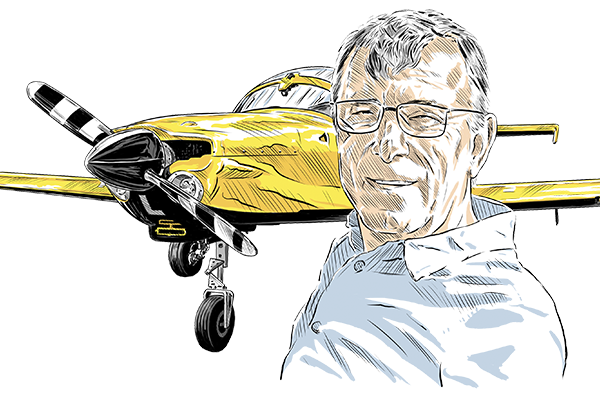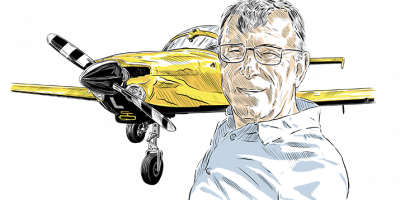Aircraft Type and Registration: Grob G109, G-CLIA
Date: 28 May 2021
Location: Husbands Bosworth, Leicester
Persons on Board: Two
Injuries: None
Nature of Damage: Extensive damage
Commander’s Licence: PPL
Commander’s Age: 59
Commander’s Flying Experience: 169 hours (of which 38 were on type); Last 90 days: five hours; Last 28 days: five hours
The pilot seated in the left seat was nominated as pilot in command, and the co-owner, a qualified pilot, instructor and examiner, was seated in the right seat and nominated as a passenger for the flight. During the take-off, aircraft acceleration was sluggish, and the pilot called out his intention to stop.
The passenger called out that he had control, and shortly afterwards the aircraft became airborne. It quickly became apparent that the aircraft was not climbing and, after reaching a maximum height of 100ft agl, it began to descend.
It was turned towards a field, but the right wing struck a tree as it descended, causing the aircraft to rotate through 180° and pitch down before striking the ground in a nose-down attitude.
The canopy flew open and forward, and both occupants were able to leave the aircraft without assistance. Neither occupant was injured.
The take-off had been attempted with the propeller in coarse pitch leading to a significant loss of performance.
History of the flight
The pilot arrived at Sulby Airstrip with the intention of flying the aircraft solo for a local flight before landing at the longer Husbands Bosworth Airfield to collect the co-owner.
Both pilots had flown the aircraft from Sulby together on previous occasions but had noted that the performance was marginal for the 410 m of runway available if the wind was not favourable.
Despite there being a headwind at Sulby on the day, the pilot decided that he would still fly the aircraft solo and arranged the pickup at Husbands Bosworth.
Having completed the pre-flight actions, the pilot took off from Sulby, climbing to 1,200ft aal before completing a 15-minute local flight during which the propeller was set to coarse pitch.
Positioning to join the circuit at Husbands Bosworth, the pilot recalls reselecting fine pitch, before completing a normal landing on Runway 27.
After taxying in, the aircraft was shut down and the pilot exited the aircraft.
Later, having pushed the aircraft into position for starting, both occupants boarded the aircraft and the pilot commenced the pre-start procedures using the aircraft checklist.
After the engine was started, the aircraft was taxied for take-off, backtracking the runway. Once the pilot was happy with the position, both pilots noted that there was a glider on finals so the take-off was commenced without delay.
The pilot had missed the final power check, which required the engine to be run at full power, and a check of the maximum rpm to be performed to confirm that the propeller was in fine pitch.
The pilot described the aircraft as sluggish on the take-off roll and, as the aircraft approached the half-way point of the runway, he checked that the airbrakes were stowed, and the rpm was within normal limits as he was expecting to be airborne by this point.
Seeing the yellow winch caravan at the end of the runway approaching, the pilot called out his intentions to abort the take-off and stop. The passenger in the right seat, then called out that he had control and the pilot let go of the controls.
Shortly afterwards the aircraft became airborne, although it was immediately clear that it was not climbing away as expected.
The aircraft reached approximately 100ft agl before beginning to descend. The pilot called to the passenger, who was now flying the aircraft, that there was a suitable field to their left.
The aircraft banked left but struck a tree with the right wing as it descended. It turned through 180° before pitching down and striking the ground nose first.
The canopy flew open and forward, and both occupants were able to vacate the aircraft without injury. The aircraft was extensively damaged.
Nick’s Analysis
The take-off was carried out with the propeller pitch set to coarse instead of fine, which led to a significant reduction in acceleration performance of the aircraft.
To those not familiar with variable pitch propellers, taking off in coarse pitch is like attempting to accelerate your car from stationary in third gear instead of first gear: acceleration will be pretty poor.
In this case, the pilot became momentarily distracted by a landing glider such that the final check of fine pitch was missed.
Once again, distraction was a contributory factor in an accident!
However, of more interest are the decision-making processes of the pilot in considering rejecting the take-off due to the poor acceleration and the decision of the ‘passenger’ (himself an instructor and examiner) to take control and continue the take-off.
It is always good practice to have some idea before take-off of an acceleration check point: a reference point at which you expect to be at a certain speed.
This might be a runway or taxiway intersection or even a tree at the side of the runway.
This practice is particularly relevant on a short runway where performance may be marginal.
If you have not achieved the desired speed by the reference point, you stop without further ado (or reject the take-off in aviation parlance).
In the case above the pilot was about to reject the take-off when the ‘passenger’ took control to continue the take-off and, unfortunately, crash the aircraft.
There have been many instances in aviation history of confusion of actions between two pilots in a cockpit, one of whom may be much more experienced than the other.
The subject was frequently discussed during aviation supervisory courses in my RAF time. The military has had a fairly spectacular record through the years of accidents and incidents caused by just this sort of confusion – some tragic, some comical.
The issue can be even more amplified in the military as ‘rank gradient’ can also come into play.
There can certainly be an unconscious nervousness in a lesser-experienced pilot when flying with a much more experienced pilot, perhaps an instructor and examiner on a routine ‘non-training’ flight.
It is more incumbent on the experienced pilot, perhaps, to understand and allay that nervousness. In this incident the pilot may have been seeking some sort of confirmation from his experienced passenger that he was going to stop, rather than just executing the rejected take-off.
Alternatively, a lesser-experienced pilot might expect the other pilot to take control in the event of a problem without actually stating that expectation.
This could lead to a situation where no action is taken by either pilot in an emergency situation, leading to wasted seconds of inaction.
The situation of experience balance should therefore be discussed by pilots before flight in order to make sure that any confusion is minimised, particularly at a critical moment such as take-off.
In the crash described above, there is no evidence as to why the passenger elected to take control and continue the take-off just as the pilot was about to stop the aircraft.
Perhaps the passenger felt that there was insufficient runway remaining to be able to stop in time.
It certainly seems a little odd to decide to continue a take-off when (presumably) the passenger had the same perception of poor acceleration as the pilot, and for which a rejected take-off was the more prudent decision to take earlier in the take-off roll. At least there were no injuries caused by the confusion, just a written-off aircraft.
As we all know, aviation can be unforgiving in errors in handling and decision making. This accident shows just how quickly things can go wrong – thankfully without significant injury.
Action points
- Consider an acceleration check point on take-off, particularly on shorter strips.
- Stop the aircraft positively and without discussion if you fail to achieve the required speed at that point.
- Discuss any significant experience differences before flight to ensure that there is no confusion about who does what through the flight, particularly at time-critical moments such as take-off.






1 comment
Good article, Nick.
I always emphasise the order of checking on takeoff.
Open throttle, keep straight.
Static RPM – if not, engine failure, STOP.
Keep straight.
Oil pressure – if not, engine will fail soon, STOP.
Keep straight.
Airspeed building – if not, a difficult flight, STOP.
Keep straight.
Vr – rotate.
Far too often, I hear pilots open the throttle then wait to see airspeed, wasting that chance for an early diagnosis and stop.